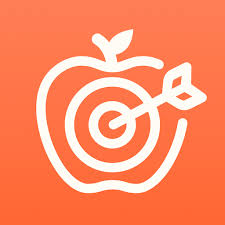If you’re tracking your food, macros, or overall nutrition, you’ve probably heard of Cronometer. It’s one of those apps that gives you a detailed look at what you’re eating, right down to the micronutrients. But when you sign up, you might wonder – should you stick with the free version or go for Cronometer Gold (the paid version)? Let’s break it down in simple terms so you can figure out which one really suits your needs.

Cronometer Explained
Cronometer is a comprehensive nutrition tracking app that helps users monitor their diet, exercise, and overall health metrics. Launched in 2005, it has grown into one of the most trusted platforms for people who want a deeper understanding of what they’re putting into their bodies.
What sets Cronometer apart from many other tracking apps is its focus on micronutrients. While most apps track calories, protein, carbs, and fat, Cronometer goes further by tracking over 80 vitamins and minerals. This makes it an ideal tool for individuals who want more than just surface-level data – from athletes and nutritionists to anyone managing a health condition or following a specific diet plan.
Whether you’re vegan, keto, diabetic, or simply aiming to improve your nutrition, Cronometer offers a structured way to understand your diet’s full nutritional impact.
Free vs Paid: Quick Comparison Table
| Feature | Free Version | Cronometer Gold |
| Ads | Yes | No |
| Barcode Scanner | Yes | Yes |
| Nutrition Tracking | 84 Nutrients | 84 Nutrients |
| Custom Charts | No | Yes |
| Fasting Tracker | No | Yes |
| Meal Timestamps & Grouping | Limited | Full |
| Recipe Import/Sharing | No | Yes |
| Sync with Fitness Devices | Yes | Yes |
| Long-Term Reports | 7 Days | Unlimited |
| Custom Biometrics | No | Yes |
| Cost | Free | $10.99/month or $59.88/year |

Cronometer Free: Features and Limitations
If you’re considering sticking with the free version of Cronometer, it’s important to know both what you’re getting and what limitations might come into play. This section gives you a full picture so you can decide if it’s enough for your needs.
What the Free Version Includes
Cronometer’s free version offers a surprisingly robust set of features, especially when compared to other nutrition tracking apps. It includes access to a highly accurate food database that pulls verified entries from sources like the USDA and NCCDB. You can track calories, macronutrients (protein, fat, carbs), and over 80 micronutrients like vitamins and minerals. There’s also a barcode scanner, which helps speed up food logging.
Free users can log physical activity and a range of biometrics, including weight, heart rate, sleep, and blood pressure. You can also create and save custom foods and recipes, set nutrient goals, and generate a basic 7-day nutrition report that gives an overview of your intake and trends.
The app supports syncing with devices and apps like Apple Health, Fitbit, and Garmin, which is a big plus for anyone already tracking fitness metrics elsewhere.
What the Free Version Is Missing
Even though the free version is generous, there are a few limits that show up once you start getting more serious about your health data. For instance, you can only access seven days’ worth of nutrition history in your reports. There are also occasional ads, and the free version lacks custom charts, advanced data analysis, and features like fasting tracking.
You also won’t be able to set different macronutrient targets for different days or import and share recipes. These might seem minor at first, but over time, they can become noticeable if you want more flexibility or are trying to stick to a structured plan.
What’s Included With Cronometer Gold
Cronometer Gold steps things up by offering tools tailored to more advanced users. The premium upgrade includes:
- An ad-free experience
- Long-term data reports and custom charts
- Fasting tracker
- Oracle Food Suggestions and Nutrient Oracle
- Meal groupings with timestamps
- Recipe sharing and import options
- Macro Scheduler
- Custom biometrics tracking
- Nutrition Scores and Nutrient Balance Charts
Customization and Flexibility
One standout feature is the Macro Scheduler, which lets you adjust your nutrition goals based on your daily schedule. Whether you’re doing carb cycling, training on specific days, or fasting intermittently, you can adapt the app to fit your plan.
Timestamps and meal groupings help keep your food diary clean and organized. Recipe import tools also make logging meals quicker for people who cook at home often.

Is Cronometer Worth Paying For?
On the surface, Cronometer’s free version offers exceptional value. You get access to accurate food tracking, barcode scanning, syncing with devices, and short-term reports – all at no cost. For casual users, it can easily meet most basic nutrition tracking needs.
However, if you want deeper insights, time-saving tools, and more flexible tracking, Cronometer Gold might be worth the investment. Priced at $10.99 per month or $59.88 per year (about $4.99/month annually), it offers:
- An ad-free experience
- Long-term and custom data reports
- Advanced features like fasting trackers and nutrient balance charts
- Recipe imports, timestamps, and custom biometrics
You can also request a free trial of Gold by contacting Cronometer support. This is a smart way to try it out before committing.
If you use the app daily and want more control over your health data, the upgrade can be well worth it.
Who Should Use the Free Version and Who Should Go Gold
Choosing between Cronometer’s free and Gold versions depends largely on your goals, habits, and how deeply you want to dive into your nutrition data. Here’s a breakdown of who each version is best suited for:
Best for Free Version Users
- Beginners and casual trackers: If you’re just getting started with food tracking or checking in on your eating habits occasionally.
- People who track calories and macros: Great for users who only need to monitor basic nutrition metrics without getting into deep analysis.
- Users with simple routines: If your meals don’t change much and you don’t need to import recipes or track meal times.
- Budget-conscious users: You get a solid tool with no cost, which is rare in the nutrition tracking space.
- Okay with minimal features: If ads and a 7-day report limit aren’t dealbreakers for you.
Best for Gold Version Users
- Athletes and high-performance users: Need to track biometrics like heart rate, sleep, and energy levels in detail.
- Data lovers: Benefit from long-term trend analysis, custom charts, and nutrient balance scores.
- People following complex diets: Whether it’s keto, intermittent fasting, or carb cycling, Gold offers more flexibility.
- Users managing health conditions: Ideal for tracking vitamins, minerals, and nutrient deficiencies over time.
- Those who cook often: Recipe importing and sharing can save time and help maintain accuracy.
If you’re not sure which side you fall on, you can always start with the free version and upgrade later if you find yourself needing more advanced tools.

The Best Nutrition App for Home Cooks: ReciMe Explained
We know that most nutrition apps stop at counting calories or logging individual foods. We built ReciMe because real life happens in the kitchen, not the barcode aisle. When you cook at home you are in control of every ingredient, so your nutrition tracker should be able to keep up.
How ReciMe Stands Out
- Recipe based nutrition: Instead of forcing you to log ingredients one by one, we calculate calories, protein, carbs, and fat automatically from the full recipe. Drop in a TikTok link, blog article, or your own creation and we do the math for you.
- Smart grocery lists: With one tap we turn your weekly meal plan into a supermarket‑aisle‑ordered list so you shop faster and forget nothing.
- Whole food focus: Because you are logging home‑cooked meals, you see the nutrient quality of real ingredients, not ultra‑processed convenience foods that often slip into other apps.
- All your recipes, anywhere: Save, categorize, and scale recipes across iOS, Android, and as a Chrome extension. Everything stays in sync so you can plan on your laptop and cook on your phone.
Why This Matters for a Healthy Lifestyle
Cooking at home is still the most reliable path to eating well. Packaged foods can hide extra sodium, sugar, or additives that never show up on a basic calorie count. By giving you precise nutrition info for every recipe, ReciMe helps you fine‑tune meals without sacrificing flavor or convenience.
If you love the deep nutrient analytics of Cronometer but live by your own kitchen creations, ReciMe is the missing piece. Try it for free and see how much simpler healthy cooking and tracking can be.
Just try it – you’ll love it:


Final Thoughts
Cronometer is a powerful nutrition tracking tools available today, whether you’re using it for free or paying for the Gold version. Its attention to detail, verified food database, and ability to track both macros and micronutrients make it a standout choice for anyone serious about improving their health.
If you’re just getting started, the free version gives you plenty to work with. And if you ever feel limited, the Gold upgrade is affordable and packed with features that offer long-term value.
The best choice ultimately depends on how you live, eat, and engage with your health goals.
FAQ
Is the free version of Cronometer really free forever?
Yes. The free version is available at no cost with no time limit. It includes food tracking, a barcode scanner, nutrition data, and device syncing.
What do I lose by not upgrading to Gold?
Gold users get features like long-term nutrition reports, advanced charts, recipe importing, fasting tools, and an ad-free experience. Free users are limited to 7-day reports and basic tracking tools.
Can I try Cronometer Gold before I pay?
Yes. You can request a free trial by contacting Cronometer support. It’s not automatically offered but is available if you ask.
Is Cronometer better than MyFitnessPal or Lose It?
It depends on your goals. Cronometer is best for detailed nutrient tracking and accuracy. MyFitnessPal and Lose It focus more on calorie tracking and community features.
